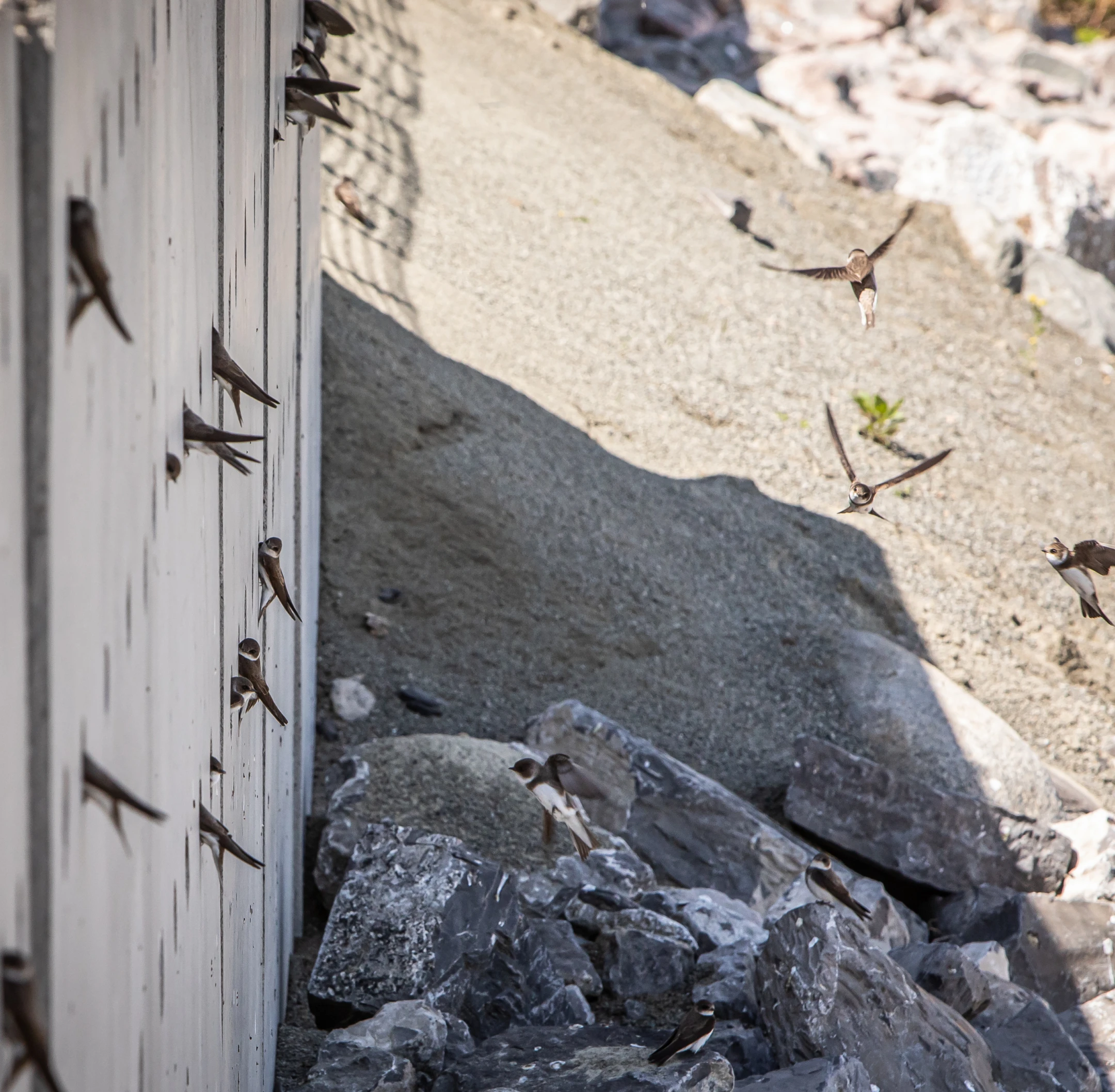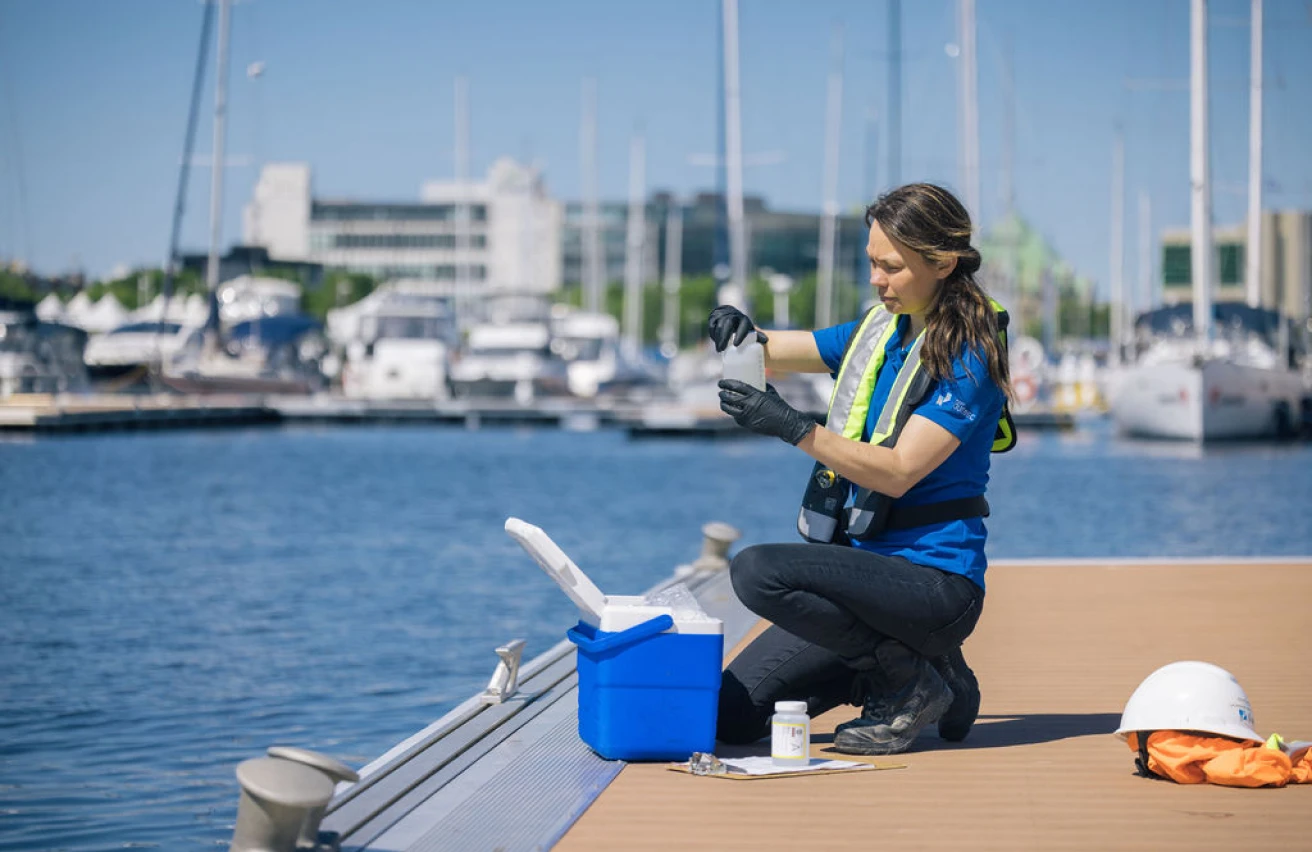Air Quality
Continuing Efforts to Improve Air Quality
Improving air quality is a priority for the Port of Québec. That’s why we’ve adopted new, more efficient practices, while continuing to innovate in environmental management.

Take a look at the ways the Port is working to improve air quality.
Daily results showing the concentration of fine particles (PM2.5) collected by monitoring stations in the community
The reference standard for PM2.5 concentration is the one set out in the Clean Air Regulation (SQ Q-2, r. 4.1), taking into account the location of measurement points and the multitude of potential sources. A 24-hour mean value of 30 µg/m³ is considered the maximum. It should be noted that the dust concentrations captured by the measuring station cannot, on their own, be used to identify the exact source of the dust.
However, since 2015, the Port of Québec has purchased various pieces of equipment to monitor air quality on its property as well as in the community. Tracking dust concentrations from these stations allows us to carry out more in-depth analyses and complement our preventive monitoring and intervention process.
-
Station – 8e avenue, Limoilou
Data for the December 26, 2025
12Moyenne quotidienne
PM12 (µg/m3)Historical
Historique des mesure des particules fines présentent dans l’air pour l’année 2025An error occurred, please try again later.
Loading*30 µg/m3 = Norme quotidienneHistory of the year 2025LoadingAn error occurred, please try again later.
-
Station – 3e avenue, Limoilou
Data for the December 26, 2025
13Moyenne quotidienne
PM13 (µg/m3)Historical
Historique des mesure des particules fines présentent dans l’air pour l’année 2025An error occurred, please try again later.
Loading*30 µg/m3 = Norme quotidienneHistory of the year 2025LoadingData accuracy
An error occurred, please try again later.
How do you interpret the data?
The reference standard for PM2.5 concentrations is the one set out in the Clean Air Regulation (SQ Q-2, r. 4.1), taking into account the location of measurement points and the multitude of potential sources. A 24-hour mean value of 30 µg/m³ is considered the maximum.
To make it easier to understand the data, we publish the PM2.5 concentration results in graphs and numbers. Average values of more than 30 µg/m³ over 24 hours are shown in red on the graph. Values of 30 µg/m³ or less are shown in green.
Methodological limitations
The particle concentrations shown above are expressed in PM2.5. They are collected at a specific location in the community and can be significantly affected by many factors, like transportation, heating, industrial activities, and even nature.
The Port’s involvement in air quality improvement initiatives
- Work of the Comité intersectoriel sur la contamination environnementale et la qualité de l’air dans l’arrondissement de La Cité‐Limoilou (CICEL) (in French only)
- Work of the Groupe de travail sur les contaminants atmosphériques (GTCA)
- Québec City data (in French only)
- Data from the Ministère de l’Environnement, de la Lutte contre les changements climatiques, de la Faune et des Parcs (MELCCFP) (in French only)
Data on fine particle concentrations are provided daily on this website to keep the public properly informed. These data are presented in a graph to make them as accessible and easy to share as possible. Depending on the circumstances, the Port of Québec reserves the right to provide additional information that may help to clarify the meaning of the data presented above.

Data accuracy